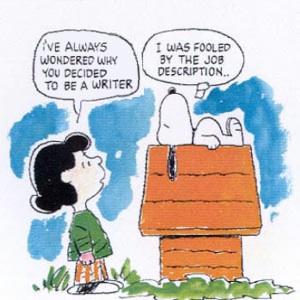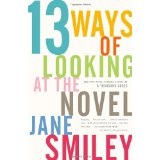 I love the Internet, and I love wasting time on the Internet – even though it sometimes ends up not being a waste of time. Claire Cameron
I love the Internet, and I love wasting time on the Internet – even though it sometimes ends up not being a waste of time. Claire Cameron
Many writers have habits and rituals. Some are sensible – like having set hours for working, always starting the day with a walk or never answering the phone during writing hours. Others are mildly eccentric such as only ever writing on yellow paper or always wearing a green cardigan. Then there are those that sound as mad as cheese. Truman Capote had to write lying down, Dan Brown hangs upside down at regular intervals (I’m saying nothing!) and Victor Hugo wrote bollock naked. Though there was a very sensible reason behind this last eccentricity.
There’s no should about it
We are all different. What suits one writer won’t work for another, so don’t listen to anyone who says you should do it a certain way. (On this subject I highly recommend Jon Winokur’s fabulous book – Writers on Writing.) There is no ’proper’ way to write. You need only do what works for you. That said, there’s a great deal of really helpful advice out there. Much of it on the Internet.
The devil incarnate
Ah! The Internet. The devil incarnate, were you to believe its critics. And there is no denying that it can be the most colossal, even destructive, time waster. If you let it. And it’s so easy to let it. There they are, just a click away, all those fascinating sites. Bringing you hours of entertainment involving cute cats, clever cats, grumpy cats, dogs rescued from burning buildings, dogs saving kittens from burning buildings, burning buildings… There’s no end to the fun you can have. And I haven’t even mentioned Social Media. Or email.
Cats and teacups
But you’re supposed to be working, right? And the Internet is a distraction, right? But remember what I said, it is if you let it. And I must admit, it does take a great deal of discipline not to click on a favourite site when you get stuck, or a bit bored. However, it would be much better and waste less time to go and make a cup of tea, do a quick set of exercises or go for a short walk. And before you say ‘but that would take too long’ consider this.
Making a cup of tea might take five minutes, the exercises five to ten, the walk, perhaps twenty. But once you click on that URL – you could be about to lose not just five, ten or twenty minutes but an entire hour, or more. All that said, the Internet can be a rich source of inspiration and ideas. Apart from the fun stuff, there are plenty of splendid blogs out there – on every subject under the sun. They not only inspire but can educate as well as entertain. The trick is to capitalise on this wonderful asset while not allowing it to distract you too much (it’s almost impossible not to be distracted at all.)
Tricks and treats
It’s easy enough to say ‘be disciplined’ but actually doing it is a different matter. It’s not impossible though. While, ultimately, it’s up to you, nevertheless there are quite a few tricks you can use like turning off the sound so you don’t hear the email notifications. Or getting into the habit of only doing your research at certain times of the day. Or allowing yourself fifteen minutes ‘fun’ browsing while having a coffee or tea break. The trick here is to set a time limit and stick to it. You could even set a timer. Or give yourself certain tasks and reward yourself with time on the net when you’ve completed them.
Overall, it’s question of habit and of not giving up. You’re going to fail. Accept it. The lure of those cats will overcome your good intentions. But if you keep trying, eventually you will form new habits. Good ones. And, regarding this blog post, don’t they say you teach what you need to learn!
















